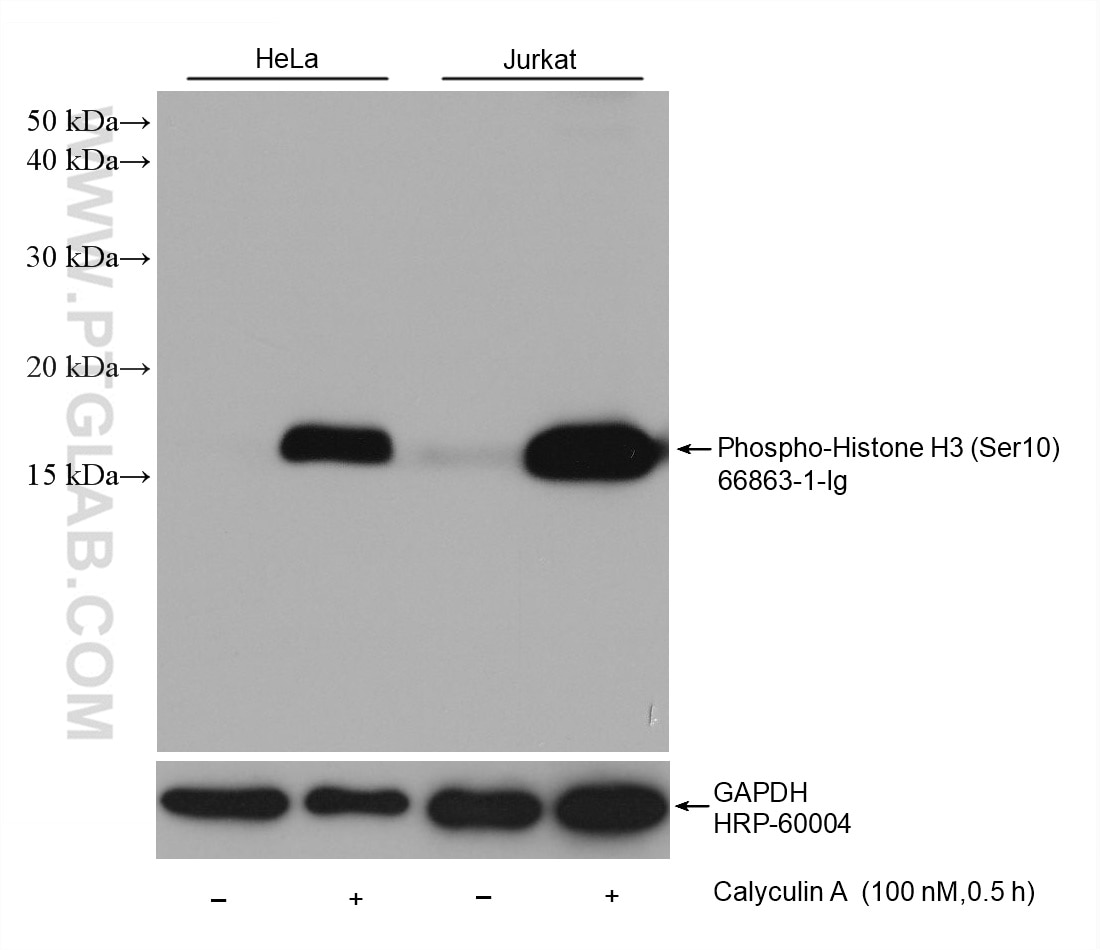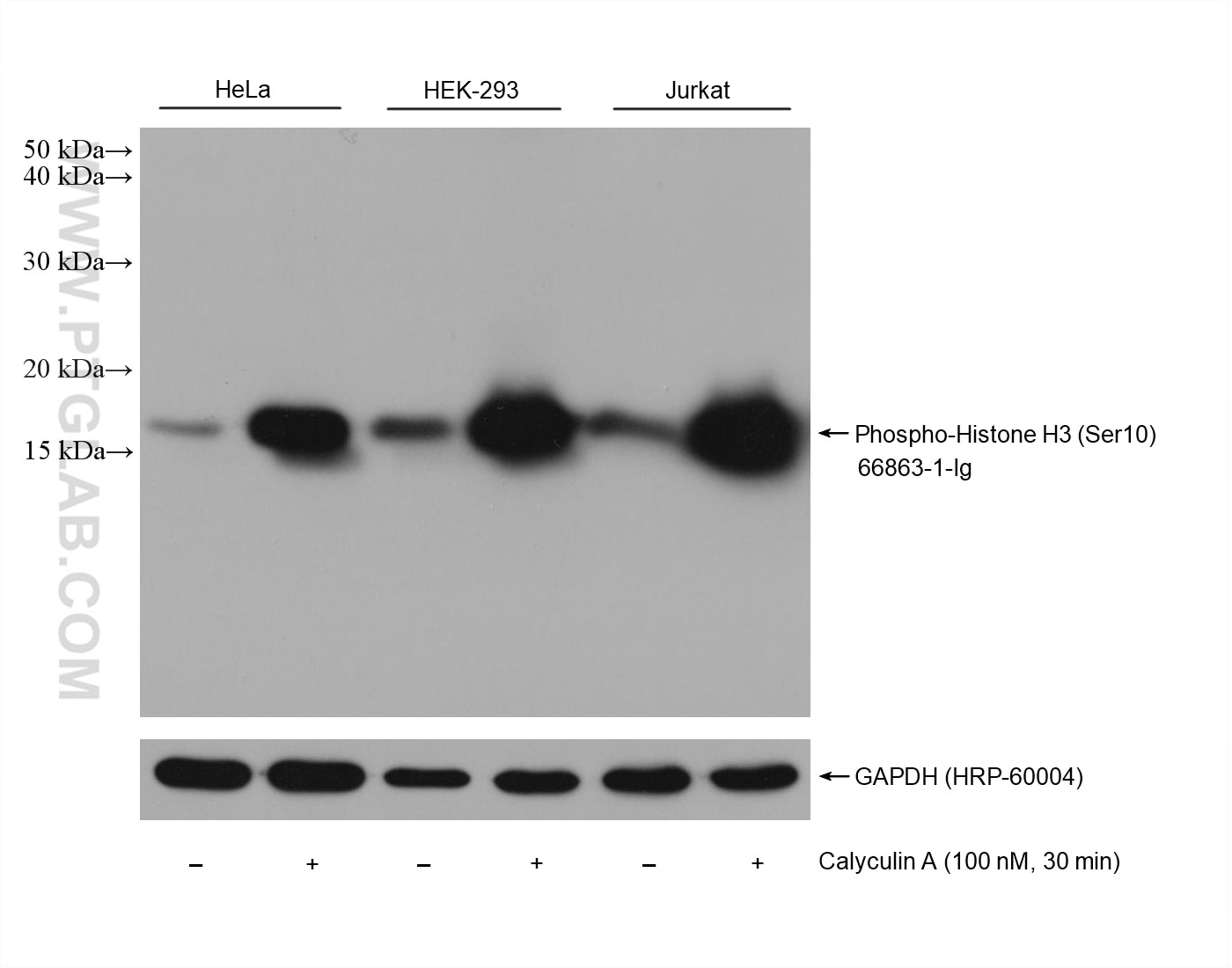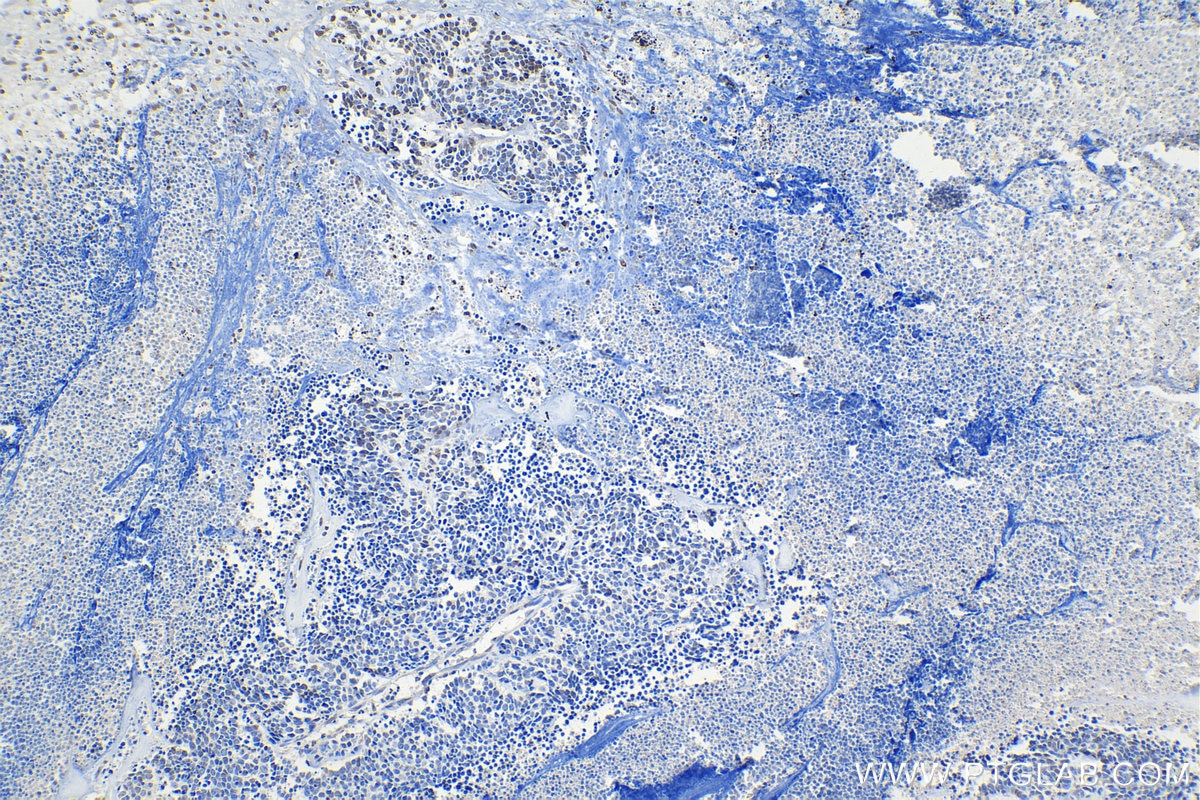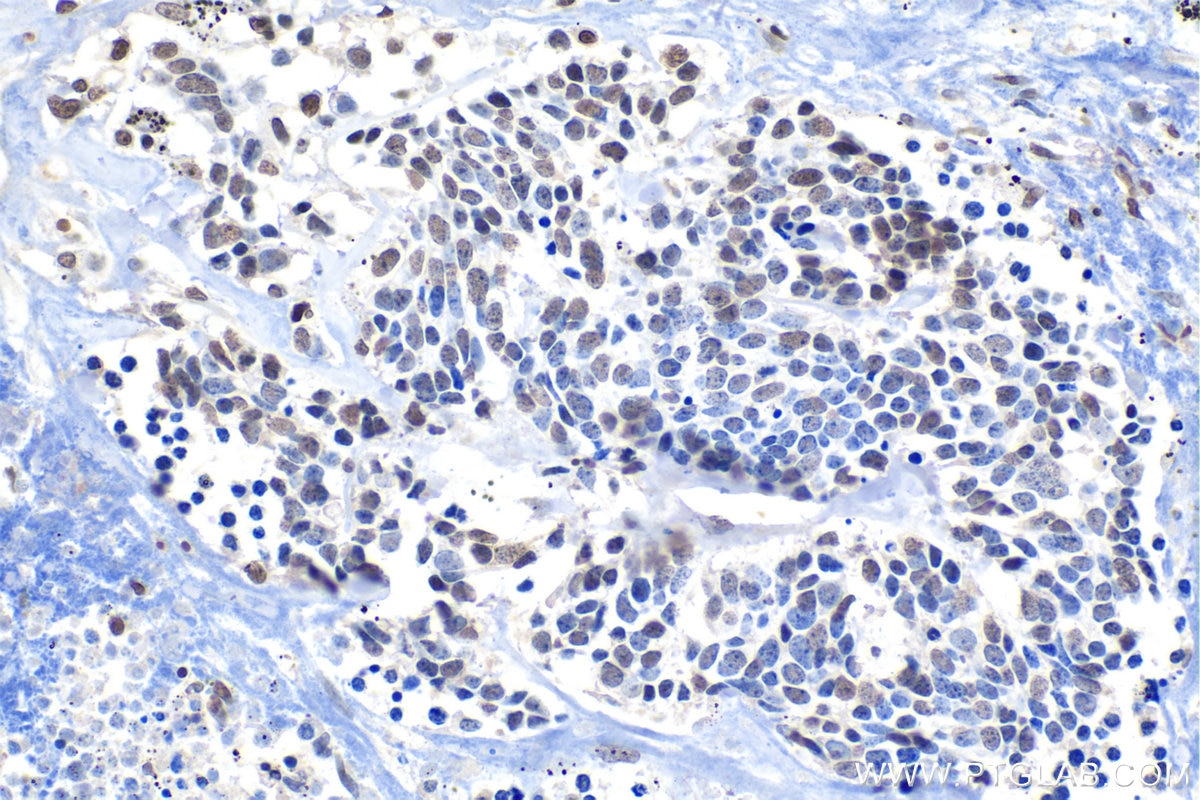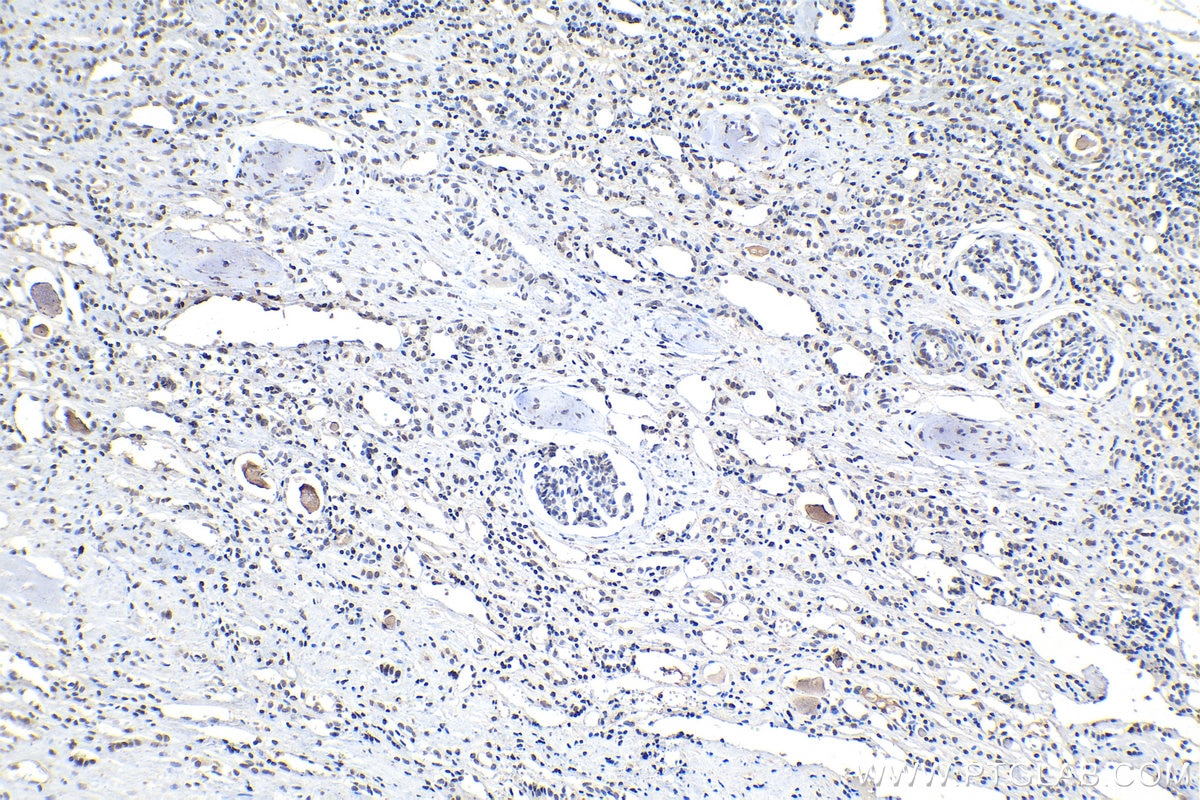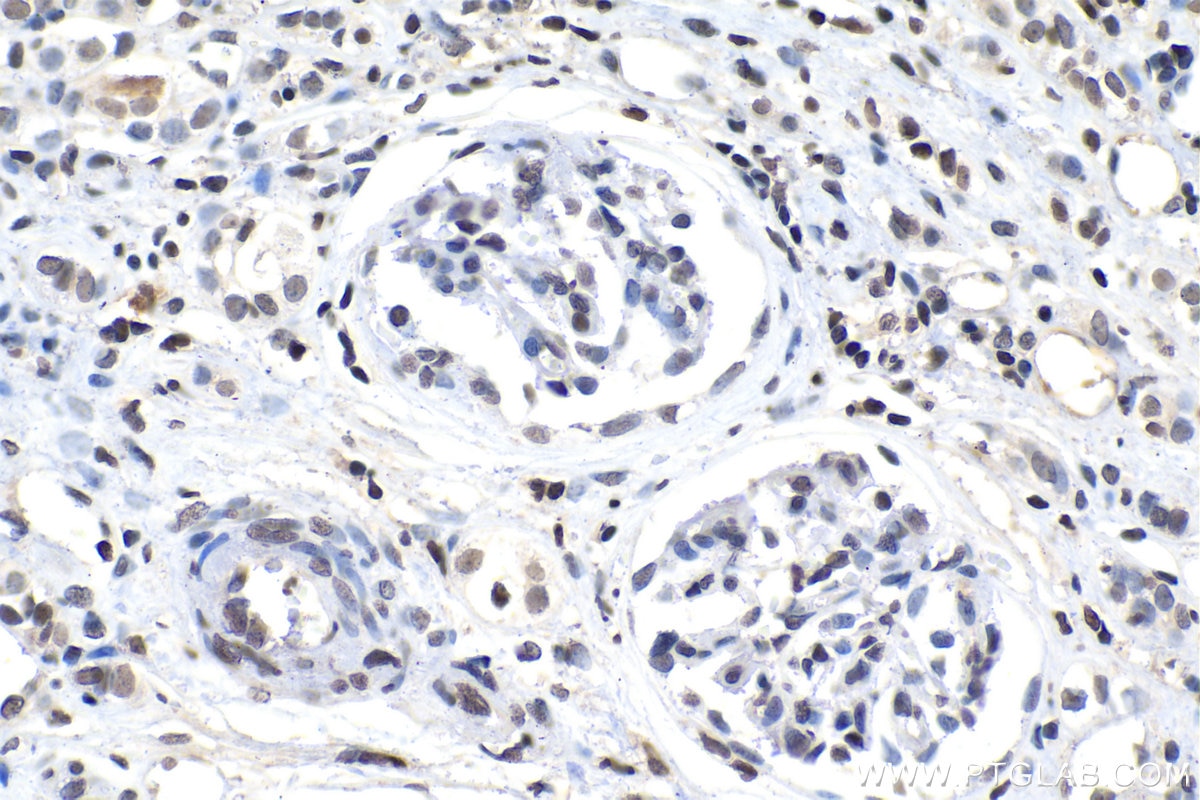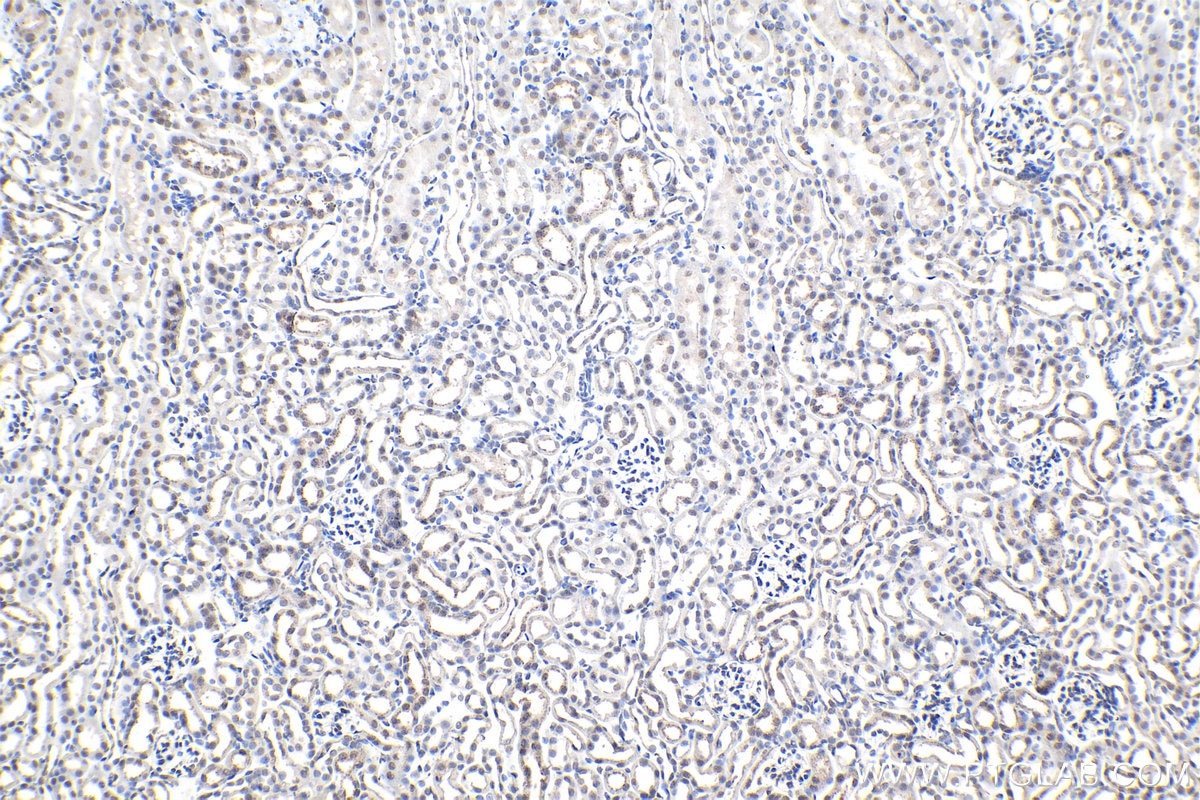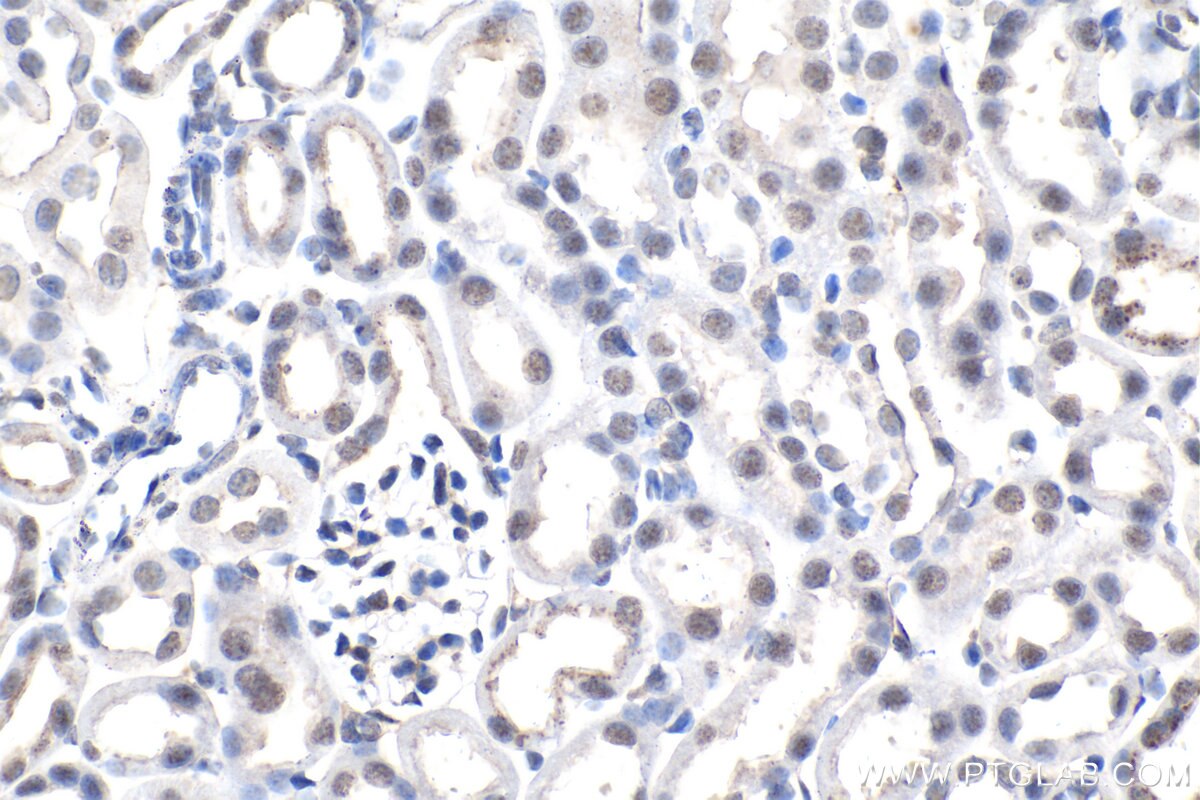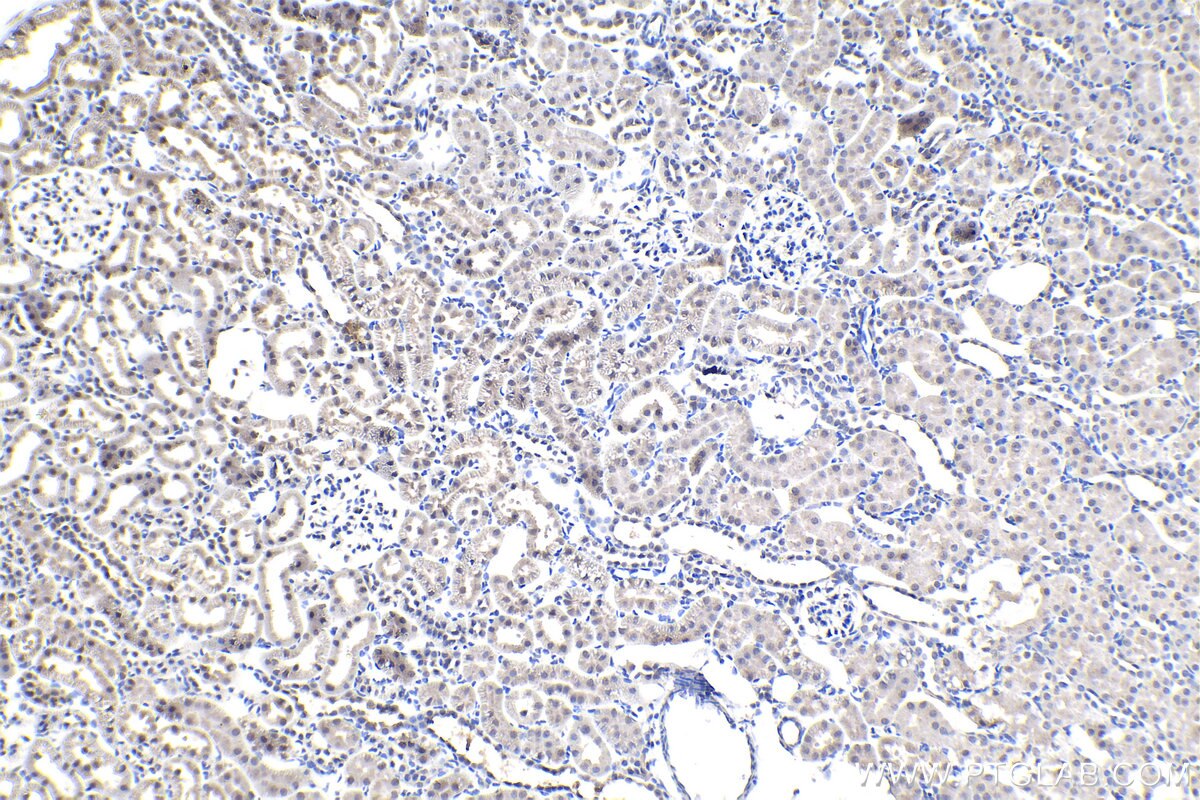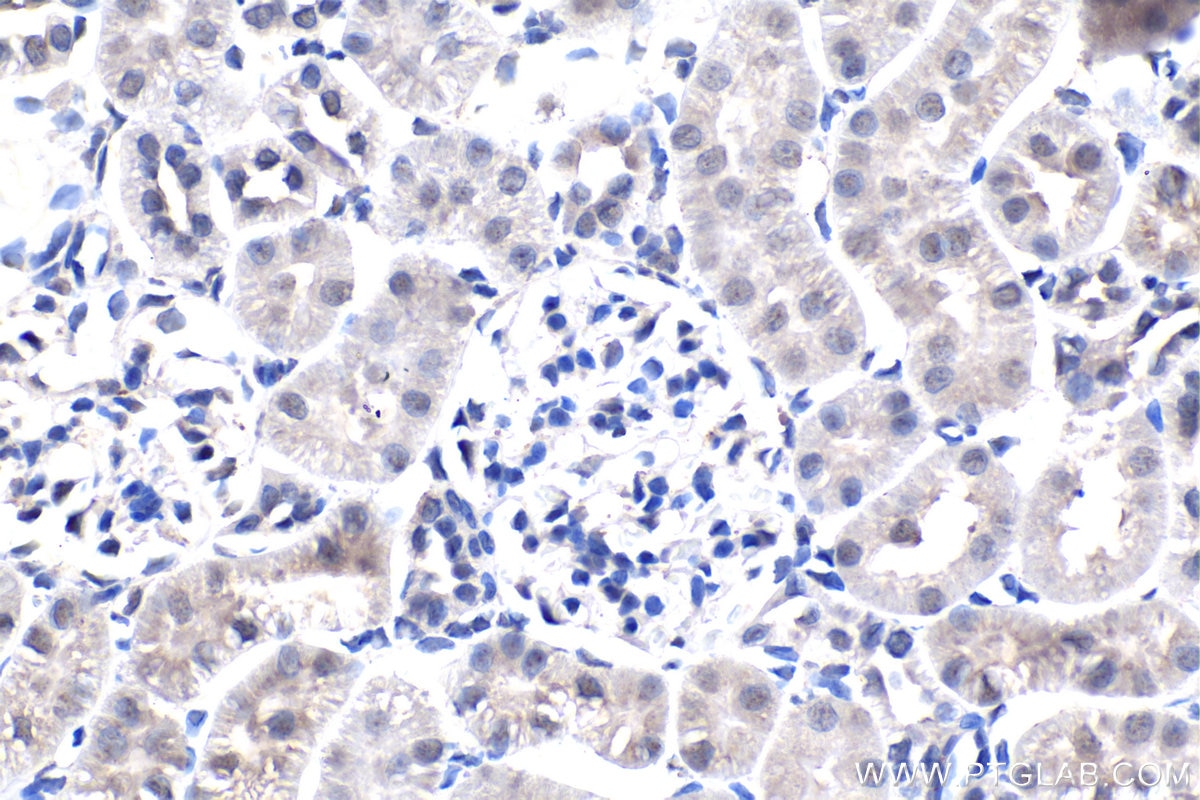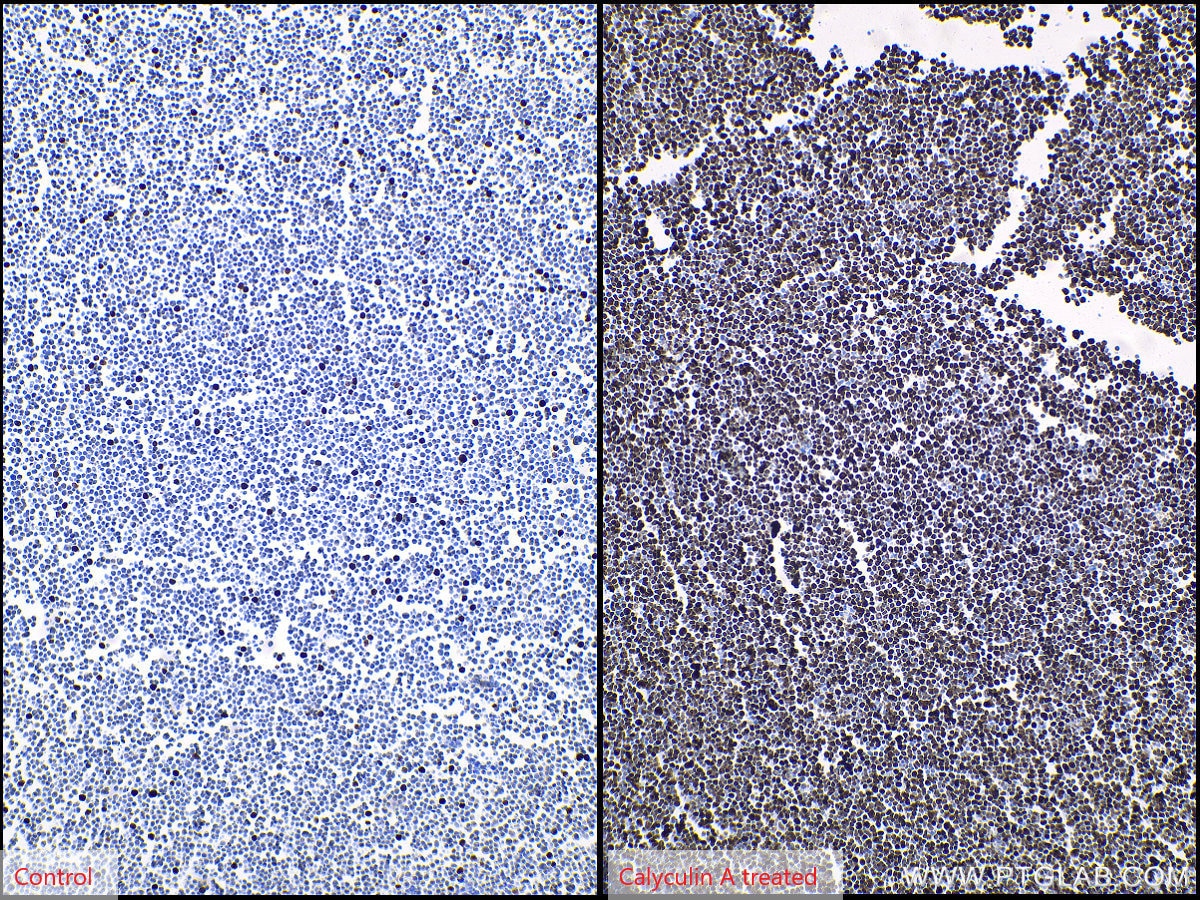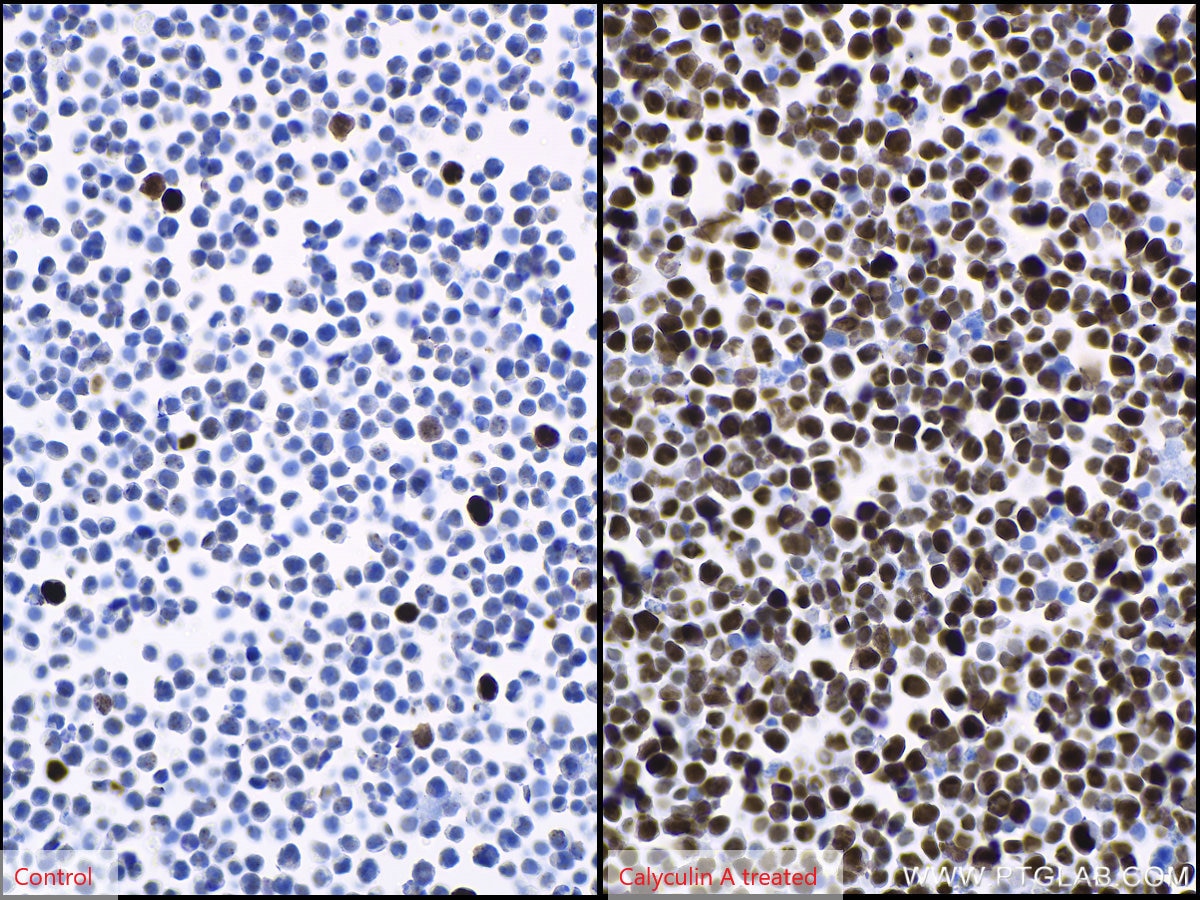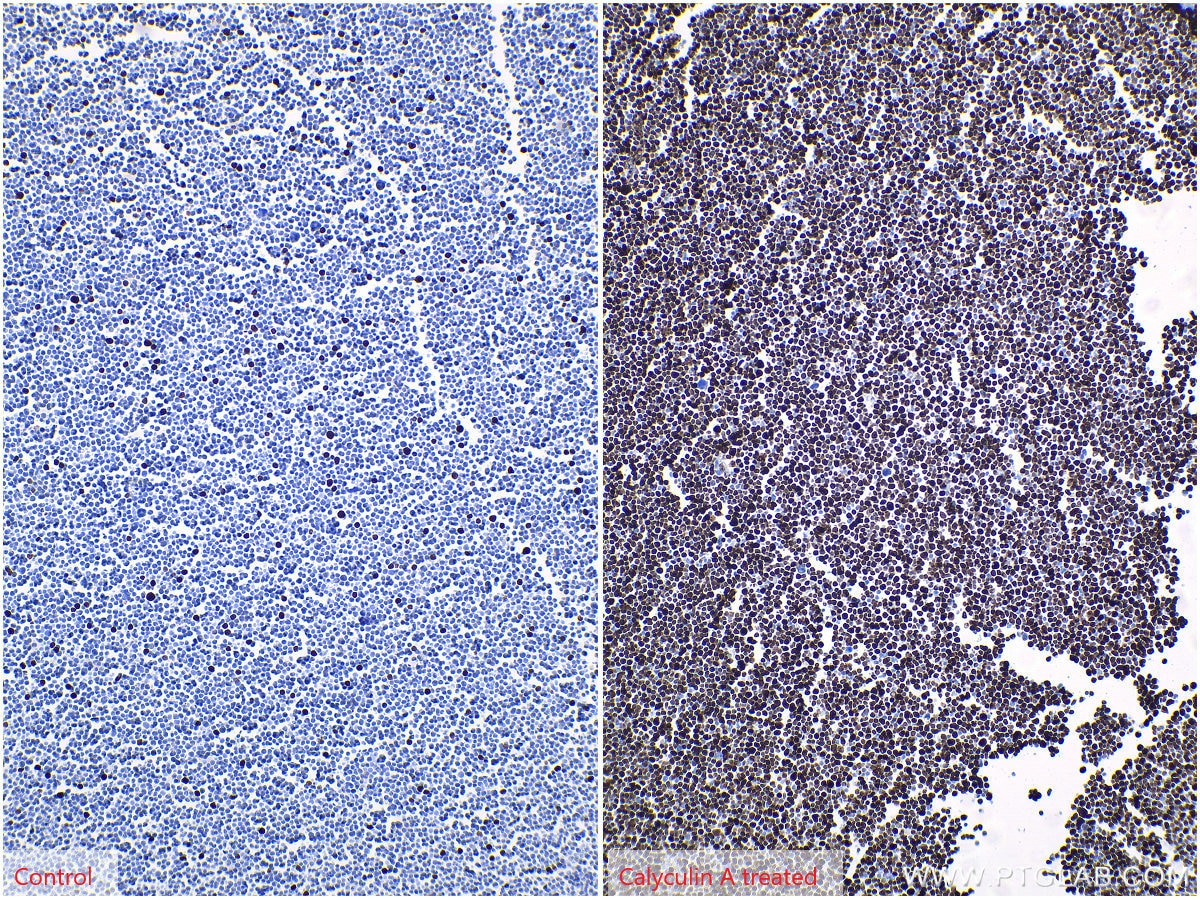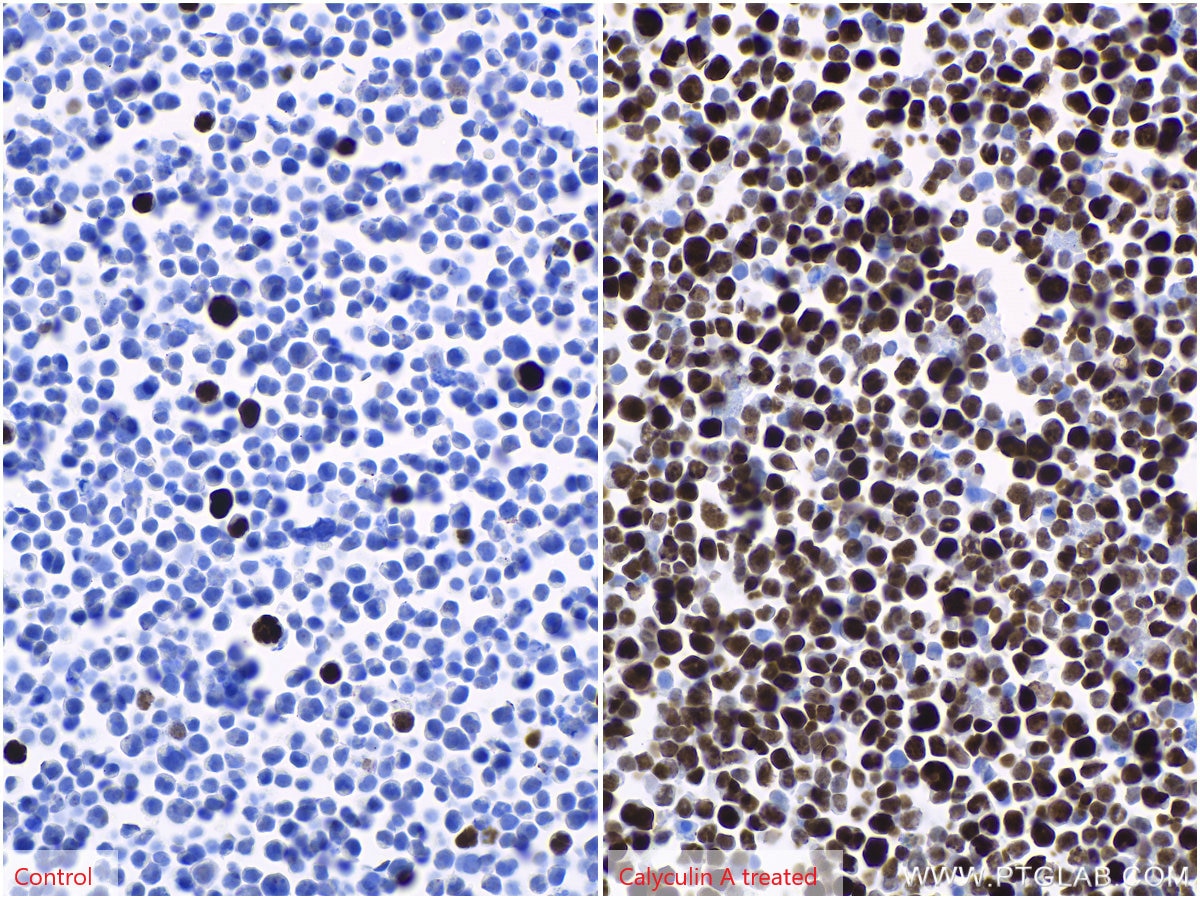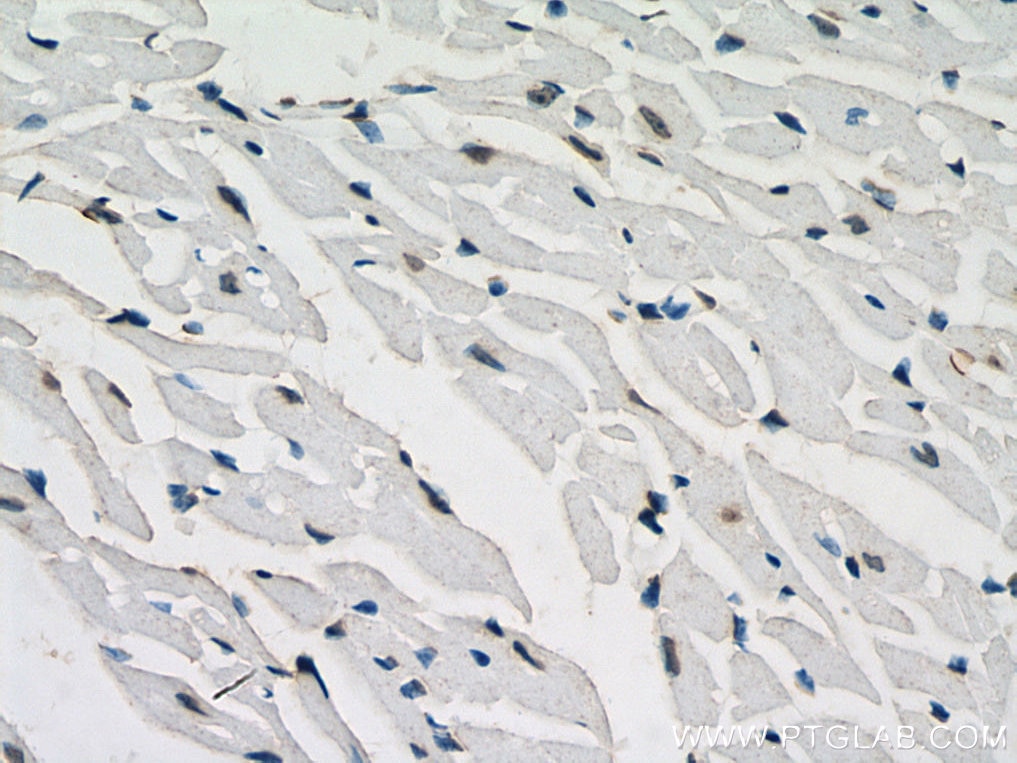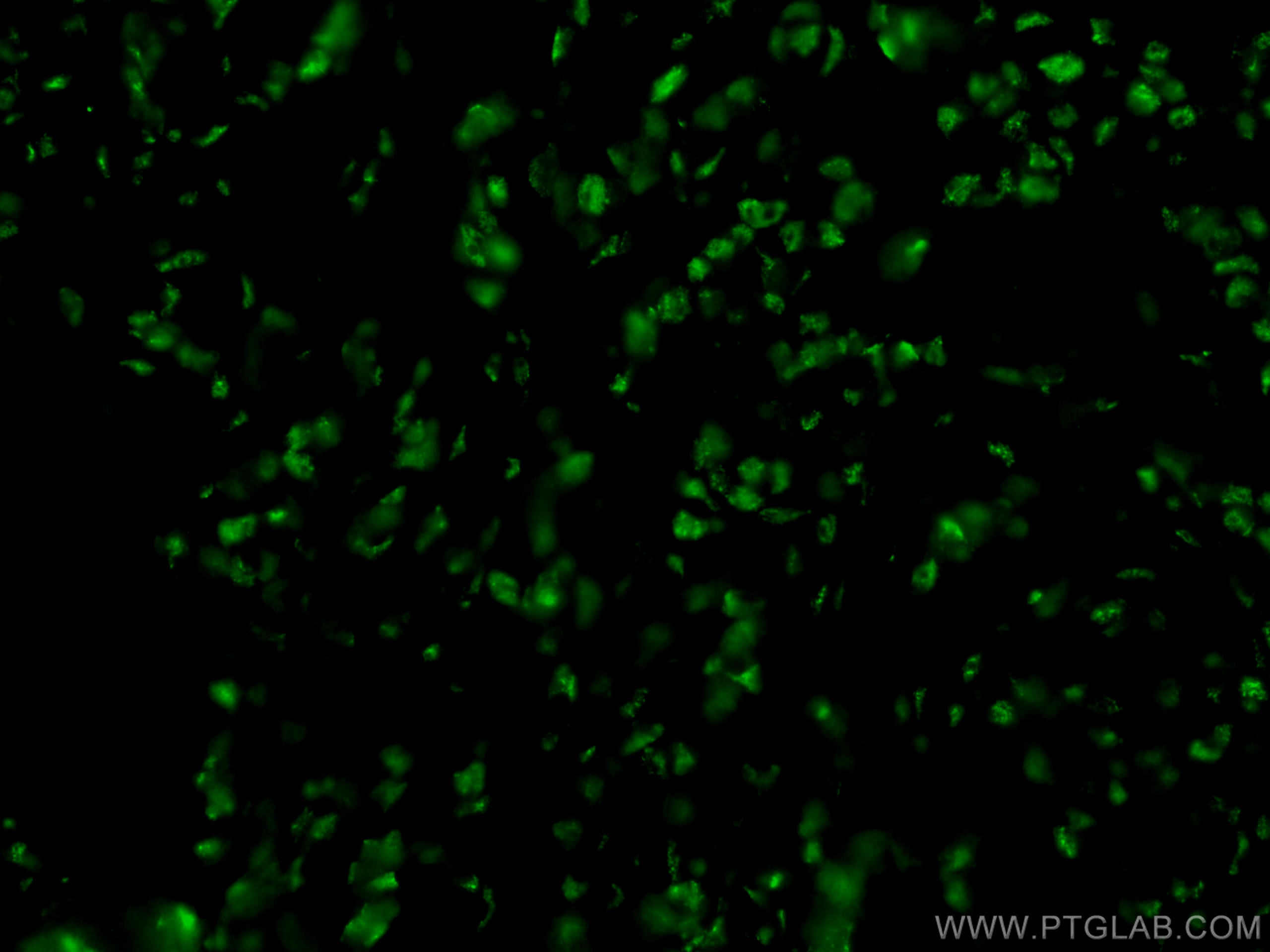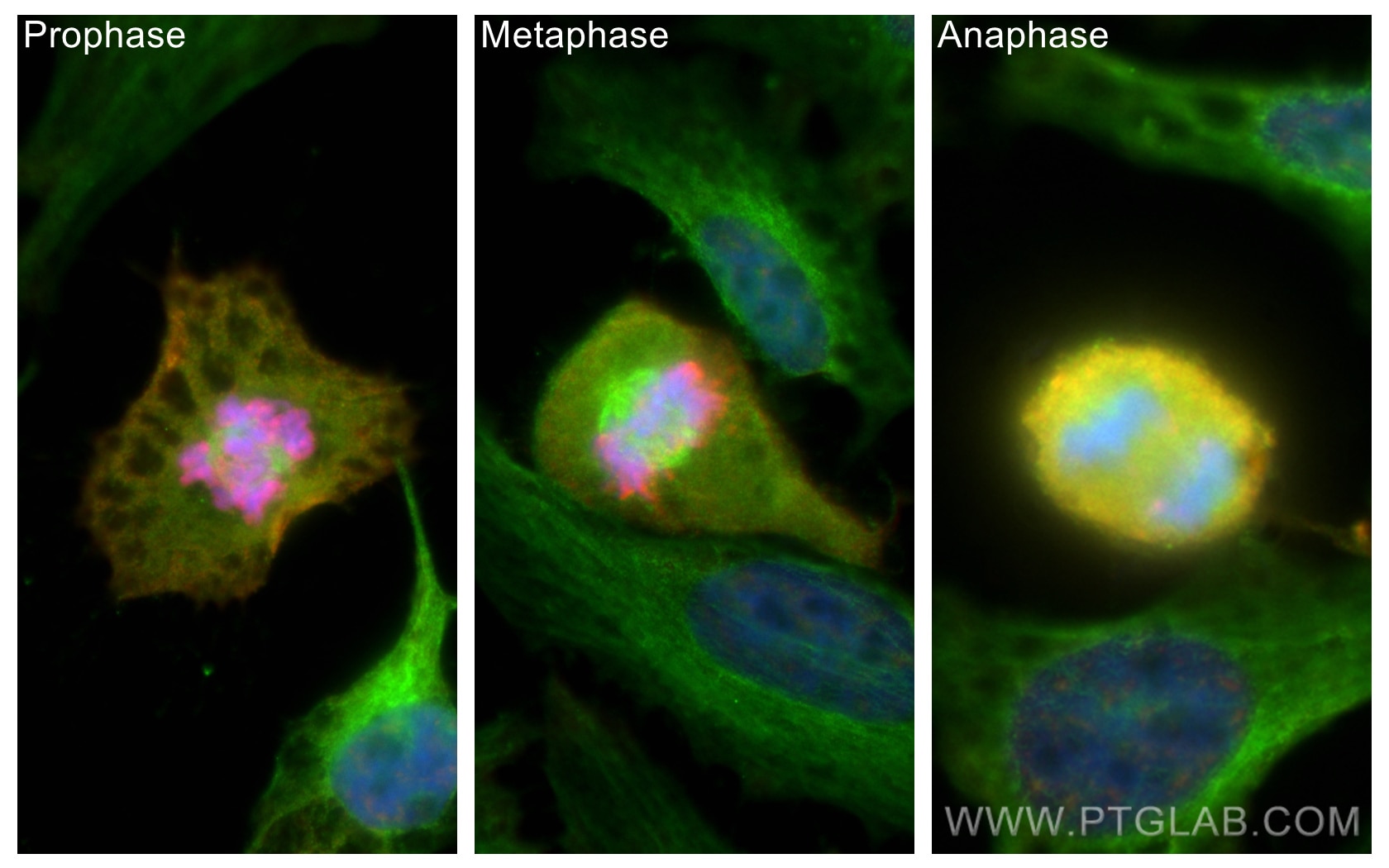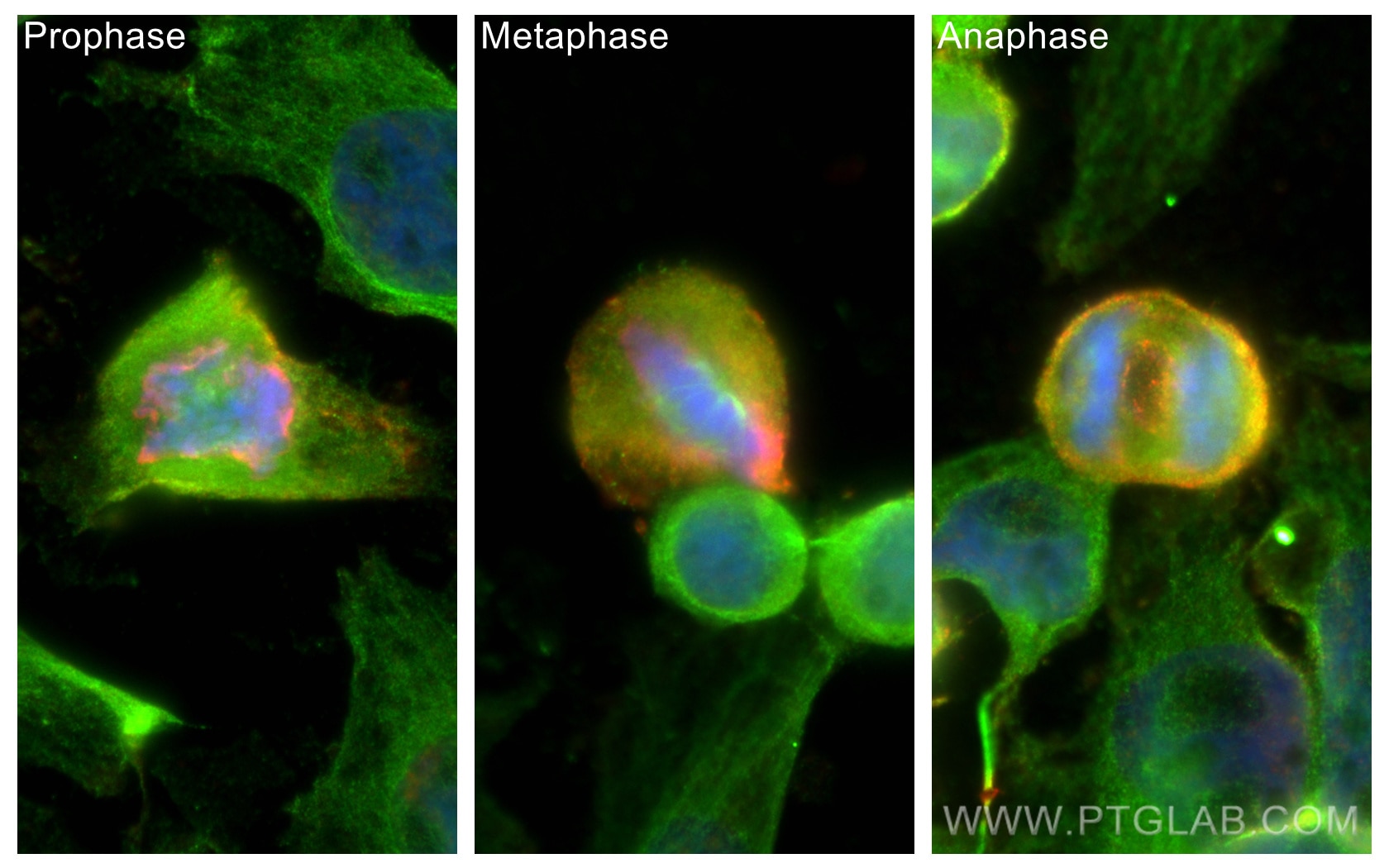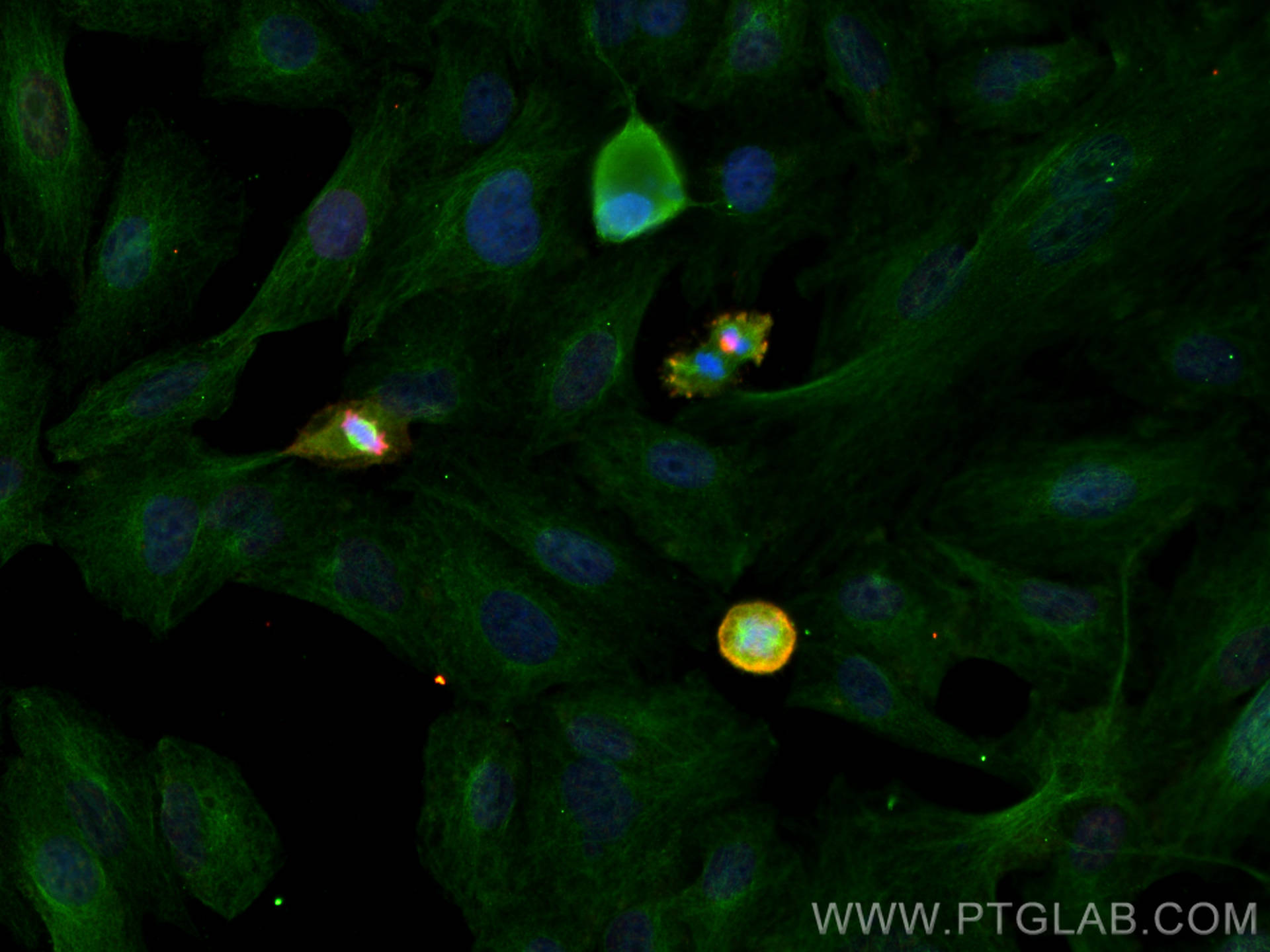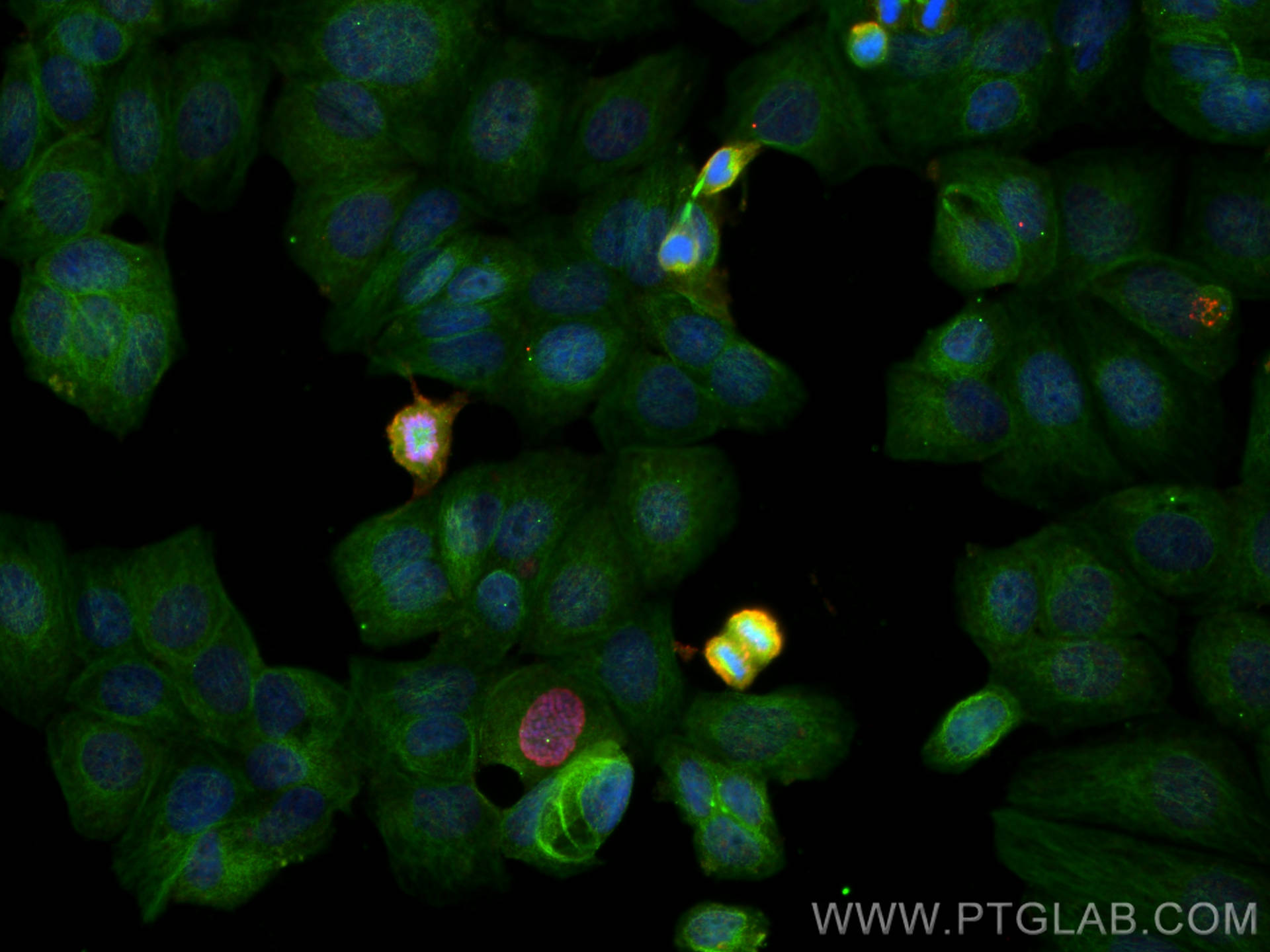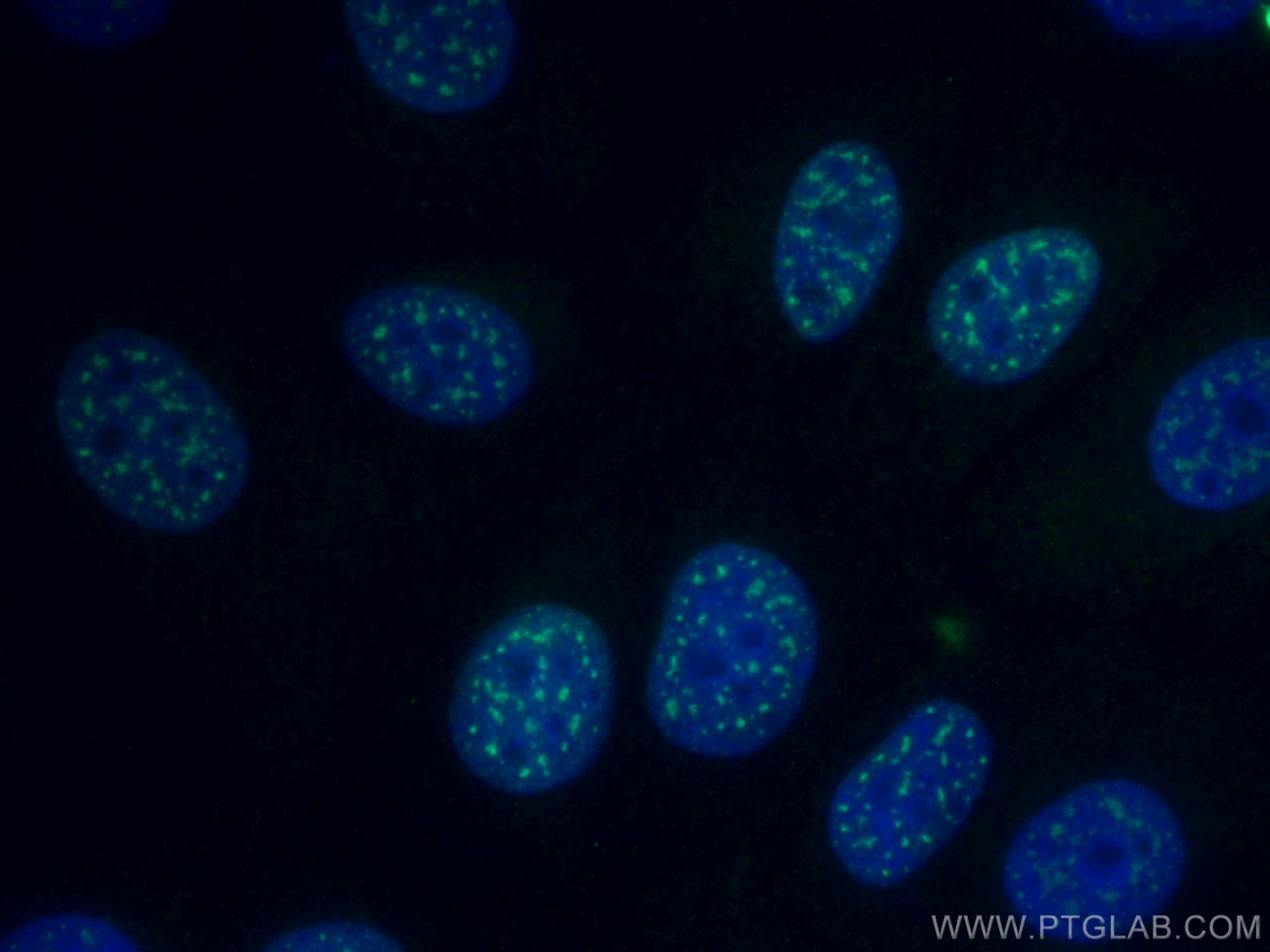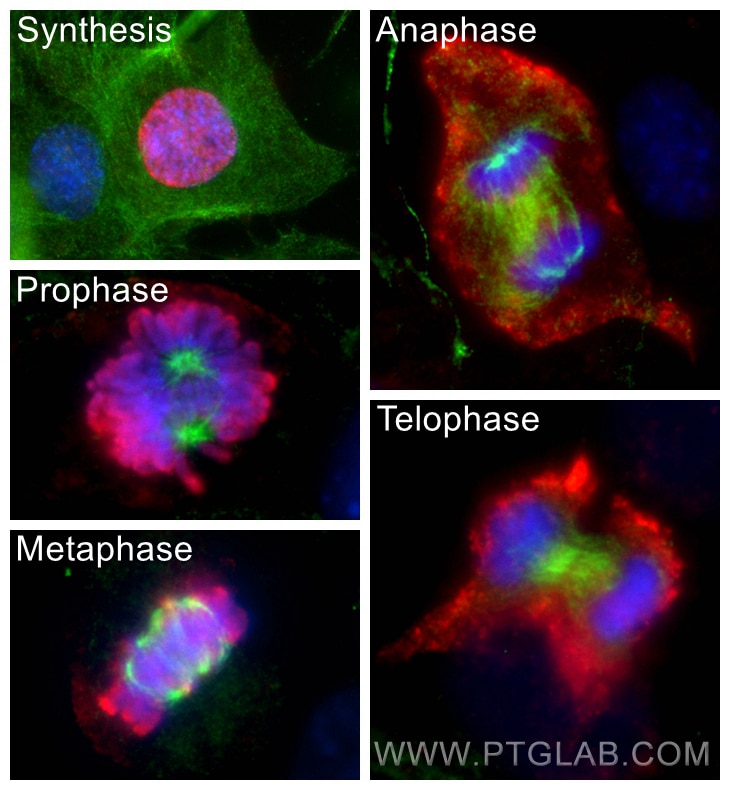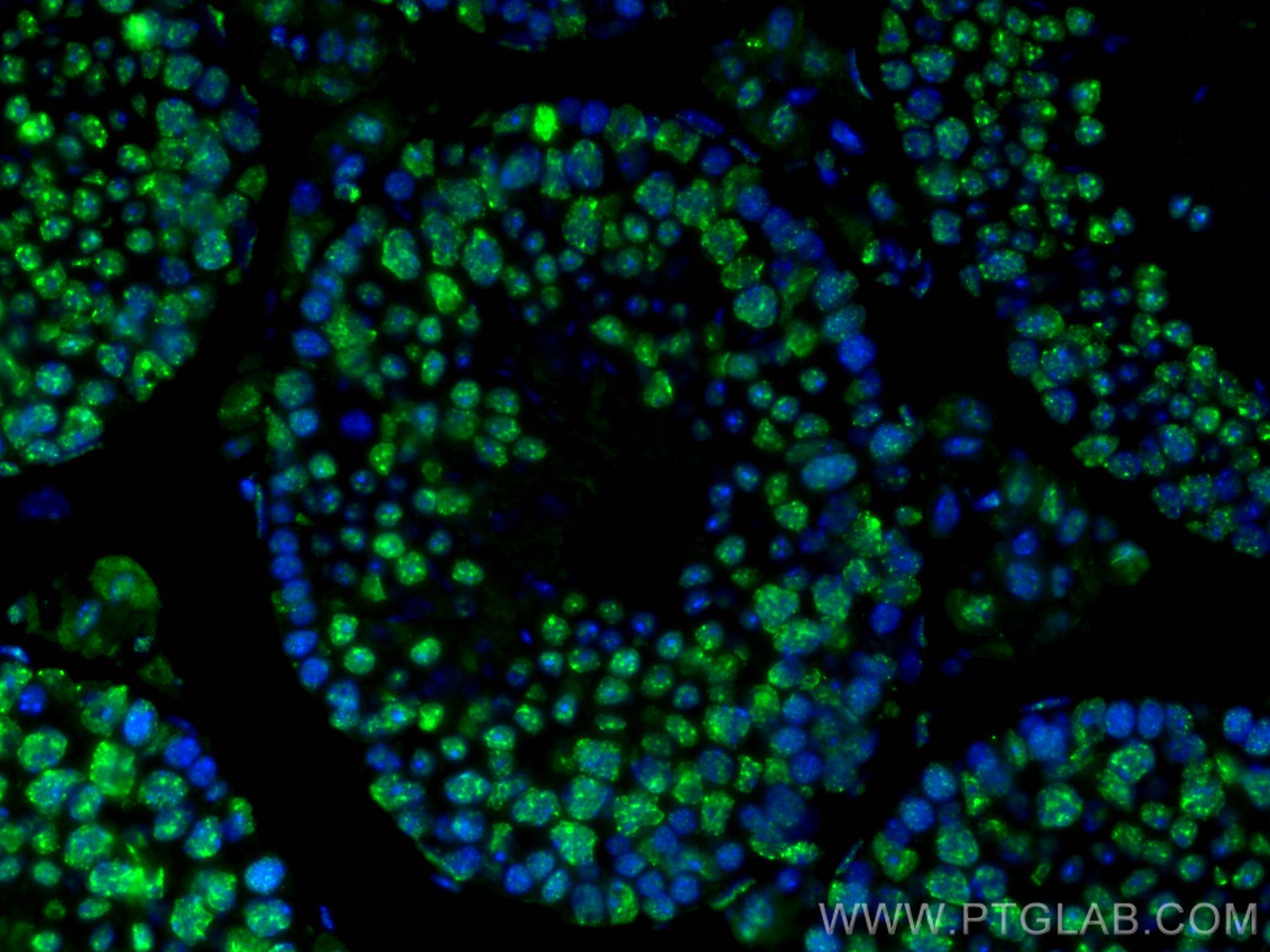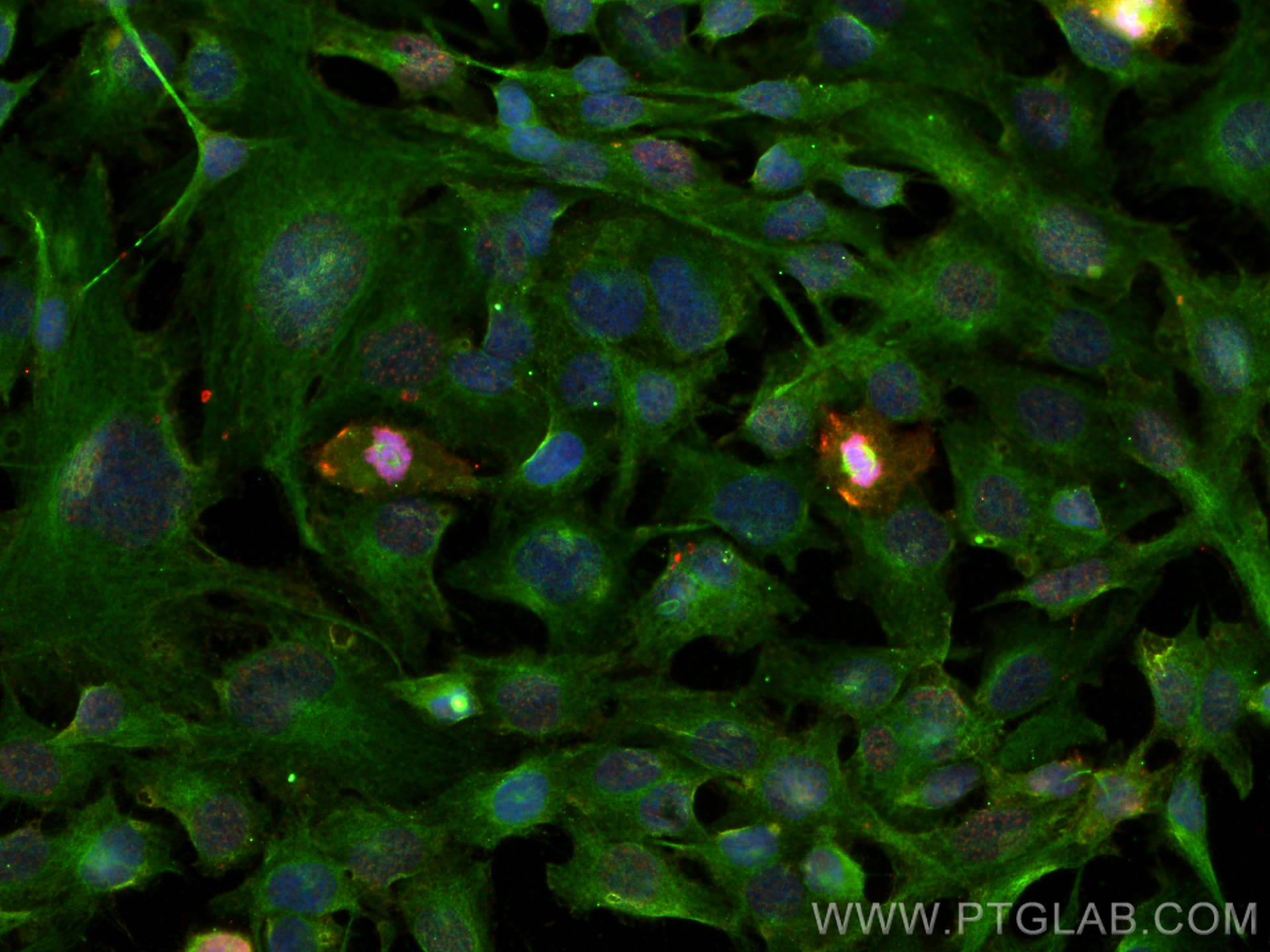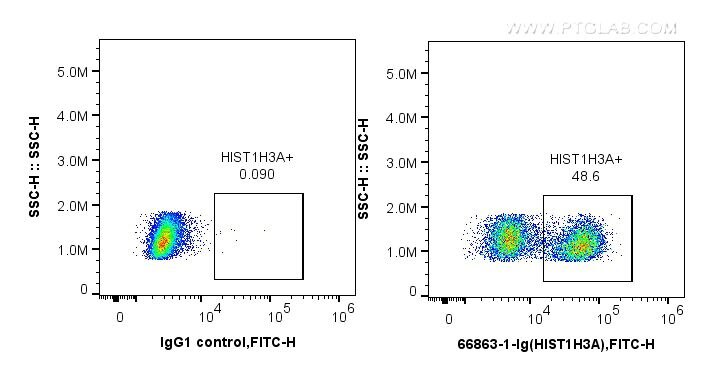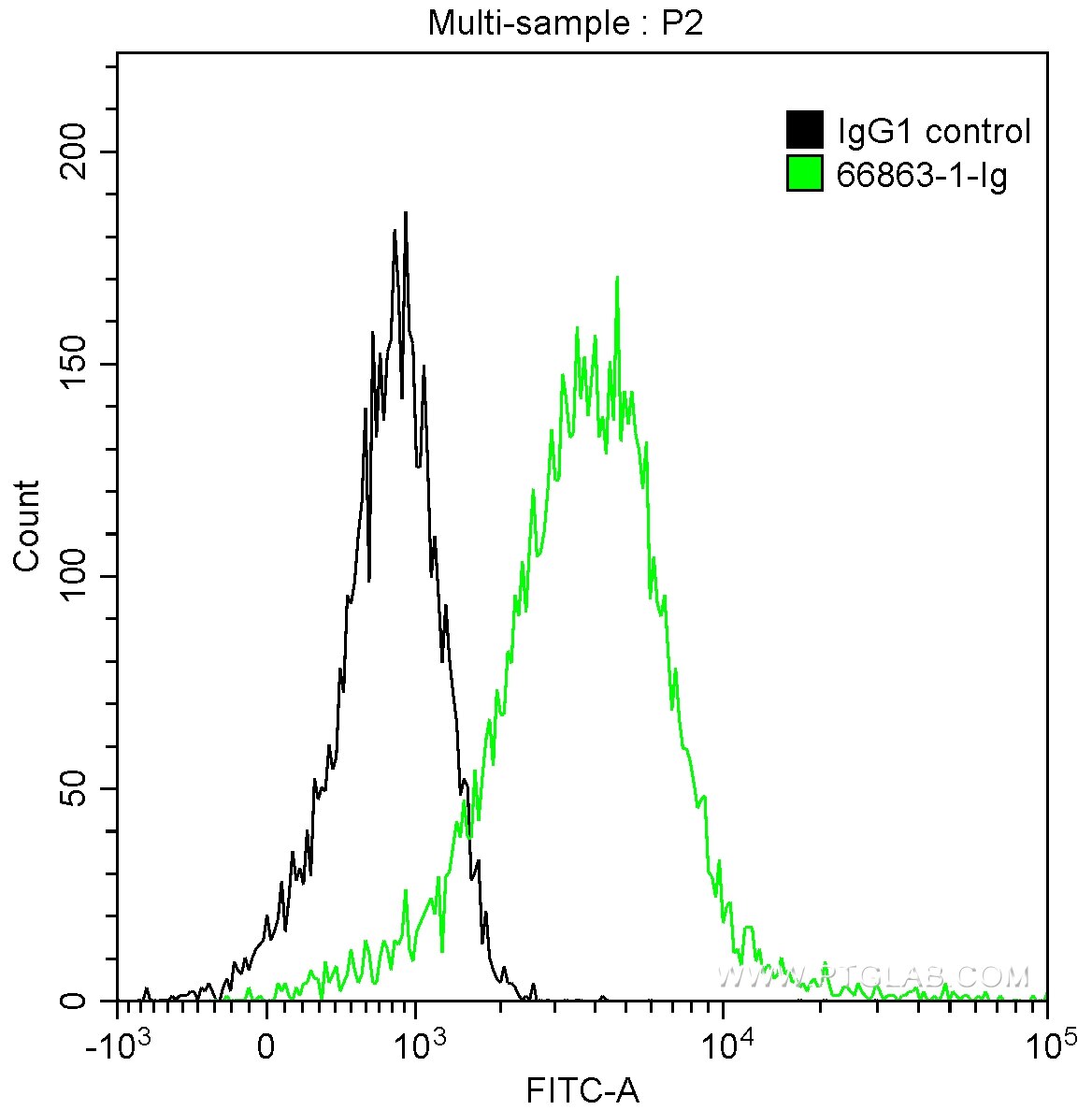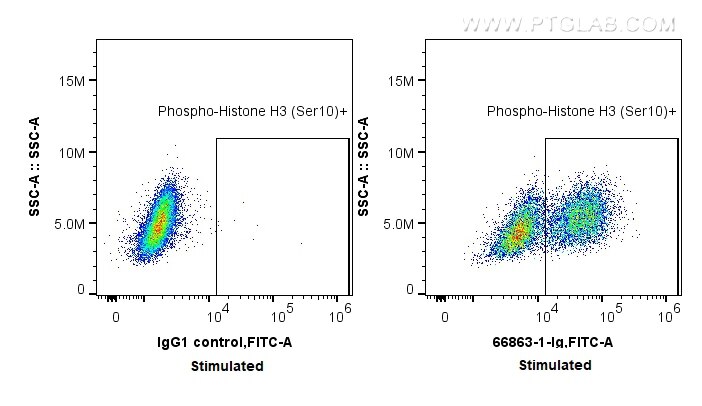Anticorps Monoclonal anti-Phospho-Histone H3 (Ser10)
Phospho-Histone H3 (Ser10) Monoclonal Antibody for FC, IF, IHC, WB, ELISA
Hôte / Isotype
Mouse / IgG1
Réactivité testée
Humain, porc, rat, souris et plus (1)
Applications
WB, IHC, IF, FC, ELISA
Conjugaison
Non conjugué
CloneNo.
4C7G2
N° de cat : 66863-1-Ig
Synonymes
Galerie de données de validation
Applications testées
| Résultats positifs en WB | cellules HeLa, |
| Résultats positifs en IHC | tissu de cancer du poumon humain, cellules Jurkat, tissu cardiaque de souris, tissu de carcinome à cellules rénales humain, tissu rénal de rat, tissu rénal de souris il est suggéré de démasquer l'antigène avec un tampon de TE buffer pH 9.0; (*) À défaut, 'le démasquage de l'antigène peut être 'effectué avec un tampon citrate pH 6,0. |
| Résultats positifs en IF | tissu de cancer du sein humain, cellules A549, cellules C2C12, cellules HeLa, cellules MCF-7, cellules SKOV-3, tissu testiculaire de souris |
| Résultats positifs en cytométrie | cellules HepG2, nocodazole treated HeLa cells |
Dilution recommandée
| Application | Dilution |
|---|---|
| Western Blot (WB) | WB : 1:5000-1:50000 |
| Immunohistochimie (IHC) | IHC : 1:1000-1:4000 |
| Immunofluorescence (IF) | IF : 1:50-1:500 |
| Flow Cytometry (FC) | FC : 0.50 ug per 10^6 cells in a 100 µl suspension |
| It is recommended that this reagent should be titrated in each testing system to obtain optimal results. | |
| Sample-dependent, check data in validation data gallery | |
Applications publiées
| WB | See 6 publications below |
| IHC | See 3 publications below |
| IF | See 5 publications below |
Informations sur le produit
66863-1-Ig cible Phospho-Histone H3 (Ser10) dans les applications de WB, IHC, IF, FC, ELISA et montre une réactivité avec des échantillons Humain, porc, rat, souris
| Réactivité | Humain, porc, rat, souris |
| Réactivité citée | rat, Humain, poulet, souris |
| Hôte / Isotype | Mouse / IgG1 |
| Clonalité | Monoclonal |
| Type | Anticorps |
| Immunogène | Peptide |
| Nom complet | histone cluster 1, H3a |
| Masse moléculaire calculée | 15 kDa |
| Poids moléculaire observé | 15-17 kDa |
| Numéro d’acquisition GenBank | NM_003529 |
| Symbole du gène | HIST1H3A |
| Identification du gène (NCBI) | 8350 |
| Conjugaison | Non conjugué |
| Forme | Liquide |
| Méthode de purification | Purification par protéine A |
| Tampon de stockage | PBS avec azoture de sodium à 0,02 % et glycérol à 50 % pH 7,3 |
| Conditions de stockage | Stocker à -20°C. Stable pendant un an après l'expédition. L'aliquotage n'est pas nécessaire pour le stockage à -20oC Les 20ul contiennent 0,1% de BSA. |
Informations générales
Phospho-histone-H3 (PHH3) is a core histone protein, which in its phosphorylated state forms the principal constituents of eukaryotic chromatin, with histone H3 being phosphorylated at serine (Ser) 10 or Ser28 as well as its phosphorylation of Ser10 being strongly correlated with the late G2 to M-phase transition in mammalian mitotic cells. On the basis of previous research, a few cell line- and animal model-based researches have displayed an increase in phosphorylation of histone H3 at Ser10 (H3S10ph), the only histone marker that is involved in carcinogenesis and cellular transformation. Histone H3 phosphorylation on serine-10 is specific to mitosis and phosphorylated histone H3 (PHH3) proliferation markers (as counts defined per area or as indices defined per cell numbers) are increasingly being used to evaluate proliferation in various tumors.
Protocole
| Product Specific Protocols | |
|---|---|
| WB protocol for Phospho-Histone H3 (Ser10) antibody 66863-1-Ig | Download protocol |
| IHC protocol for Phospho-Histone H3 (Ser10) antibody 66863-1-Ig | Download protocol |
| IF protocol for Phospho-Histone H3 (Ser10) antibody 66863-1-Ig | Download protocol |
| Standard Protocols | |
|---|---|
| Click here to view our Standard Protocols |
Publications
| Species | Application | Title |
|---|---|---|
Oncogene Oncogenic long intervening noncoding RNA Linc00284 promotes c-Met expression by sponging miR-27a in colorectal cancer. | ||
Biochem Pharmacol A novel aromatic amide derivative SY-65 co-targeted tubulin and histone deacetylase 1 with potent anticancer activity in vitro and in vivo. | ||
Front Mol Biosci High-Resolution Imaging of Tumor Spheroids and Organoids Enabled by Expansion Microscopy. | ||
Sci Rep NF90-NF45 is essential for β cell compensation under obesity-inducing metabolic stress through suppression of p53 signaling pathway. | ||
Dev Dyn The dynamic spatial and temporal relationships between the phalanx-forming region and the interdigits determine digit identity in the chick limb autopod. | ||
Front Immunol Oocytes could rearrange immunoglobulin production to survive over adverse environmental stimuli |
